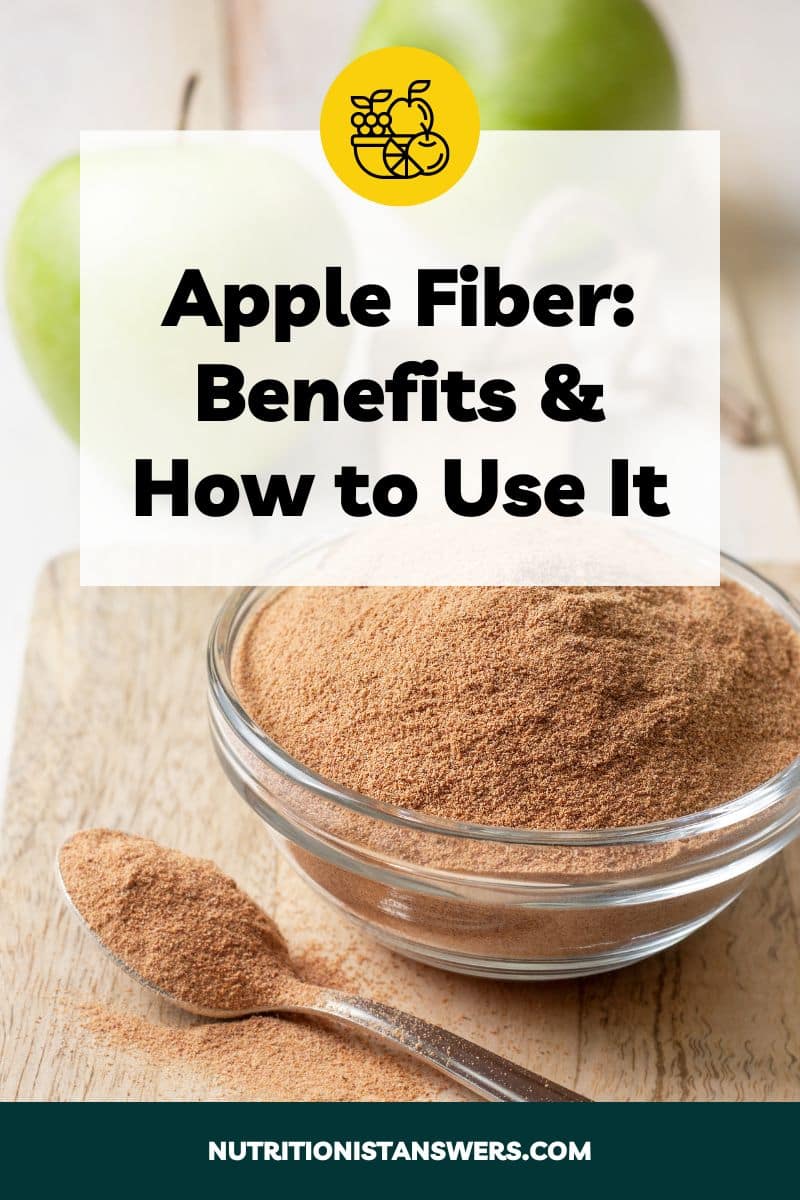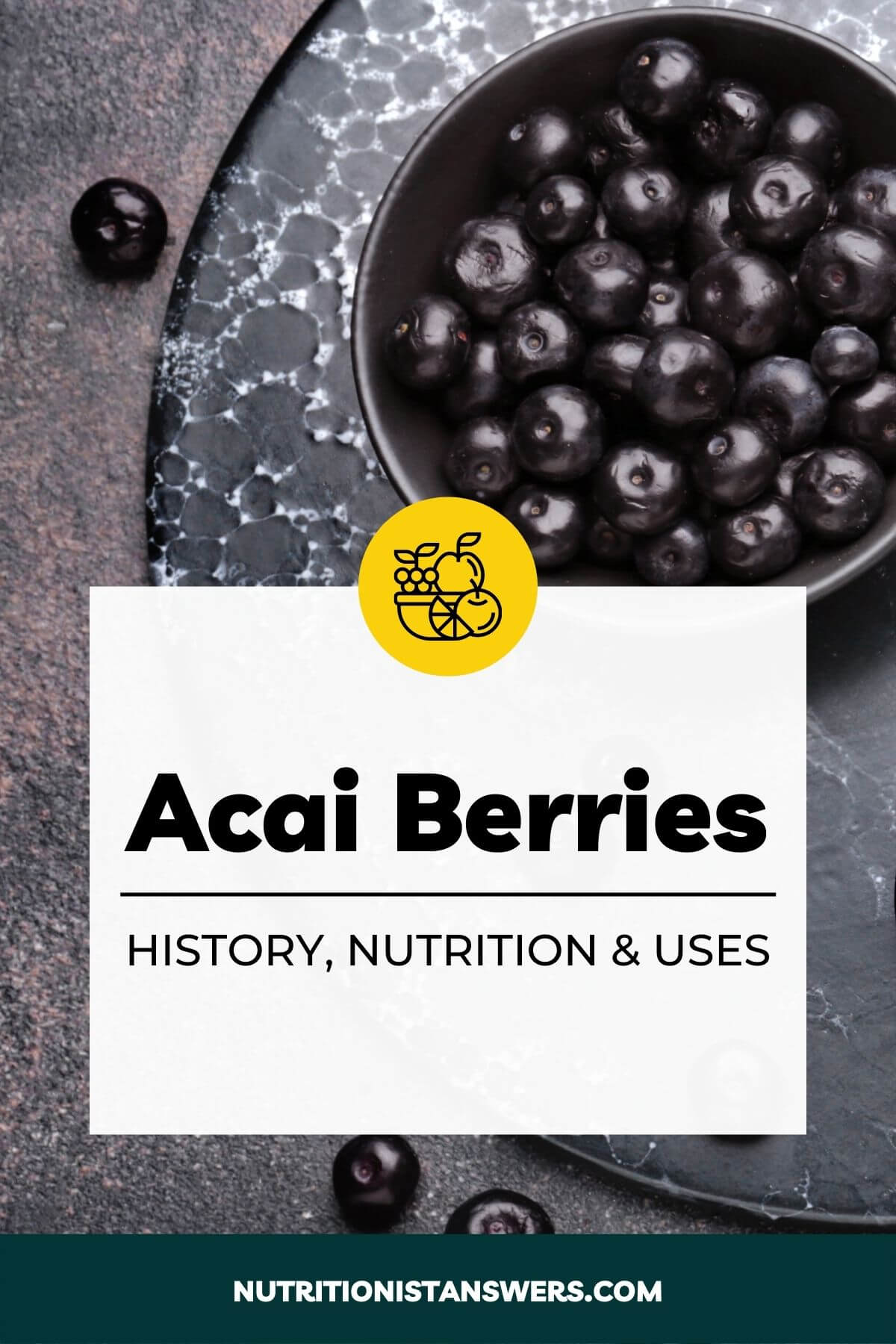Among the endless options for fiber supplements available on the market, you may not have considered apple fiber.
Apple fiber is a fantastic source of dietary fiber for people who struggle to get enough, and it can easily be incorporated into the foods you eat every day.
In this article, we’ll explain exactly what apple fiber is and dive into its nutritional benefits, as well as where to buy it and how to use it.
Please note that this article contains affiliate links. If you click one of these links and make a purchase, we may earn a commission. As an Amazon Associate, we earn from qualifying purchases.
What is apple fiber?
Apple fiber is a light brown powder typically made from dried apple pomace, the pulp leftover after apples are processed for juice, cider, and other products.
It is naturally high in fiber, although the types and amounts vary based on which part of the apple is used and how the product is processed.
Apple fiber tastes mildly sweet and tangy with just a hint of apple flavor and has a slightly grainy texture. When mixed with water, it absorbs moisture and takes on an applesauce-like consistency.
Most people use apple fiber as a supplement, but it can also be used as a flour alternative in baking and as a thickener for sauces and soups.
Apple fiber nutrition
Apple fiber is low in calories, rich in carbohydrates and fiber, and contains no fat or protein.
The nutrition facts vary between different apple fiber products, but in general, a 10-gram (1 tablespoon) serving of apple fiber powder provides the following nutrients (1, 2):
- Calories: 40-50
- Protein: 0 grams
- Fat: 0 grams
- Sodium: 0-10 mg
- Carbohydrates: 8-9 grams
- Fiber: 5-6 grams
- Sugars: 2 grams
- Vitamin D: 0 mcg
- Calcium: 8-50 mg (1-4% DV)
- Iron: 0.2-0.4 mg (2-4% DV)
- Potassium: 0-54 mg (0-2% DV)
- Vitamin C: 34 mg (38% DV)
Fiber is the main nutrient in apple fiber. A single serving provides 5-6 grams of fiber — the same amount as a large apple (2, 3, 4).
The type of fiber varies depending on which part of the apple was used. For example, the peel contains a higher concentration of pectin (a type of soluble fiber) than the flesh (5).
Apple fiber also provides 8-9 grams of carbohydrates per serving, about 75% fewer carbohydrates than a large apple (1, 2, 4).
Although we couldn’t find info about all of the vitamins and minerals in apple fiber, it does appear to be high in vitamin C and provides very small amounts of calcium, iron, and potassium (1, 2).
Apple fiber is also likely rich in antioxidants, such as anthocyanins and flavonoids, that are naturally found in apples (6).
Benefits of apple fiber
While apple fiber itself hasn’t been studied, there is plenty of research showing the health benefits of apples and pectin, a particular type of fiber found in apples.
1. Improves gut health
Apple fiber is rich in prebiotics, such as pectin, that serve as a food source for beneficial bacteria that grow in the intestines (7).
Pectin increases the number of healthy bacteria in the gut while reducing inflammation and strengthening the intestinal barrier (8, 9, 10).
Having healthy levels of gut bacteria is linked to a lower risk of gastrointestinal conditions, including irritable bowel syndrome and inflammatory bowel disease (11, 12).
2. May ease constipation
Low fiber intake is linked with a higher risk of developing constipation, and studies show that adding fiber to your diet can help ease symptoms (13, 14).
Pectin, the main type of fiber found in apples, adds bulk to the stool and increases transit time — the amount of time required for food to move through the digestive tract (15).
To use apple fiber for constipation, start with 1 tablespoon per day and gradually increase to 2 tablespoons if needed. Make sure to drink plenty of water as well.
3. May lower cholesterol
Several studies have shown that adding pectin-rich foods, such as apples and apple fiber, to your diet can help lower cholesterol levels (16, 17).
In one study, people who ate 2 apples per day had lower “bad” LDL cholesterol and triglycerides after 8 weeks (17).
Researchers believe this cholesterol-lowering effect is only partly due to fiber. Polyphenols, a group of chemicals found in apples and other plant-based foods, may also play a role (17).
4. May lower blood sugar
Fiber, including the type found in apple fiber, can help slow the absorption of sugar into your bloodstream and reduce blood sugar spikes after meals (18, 19).
In one study, eating 5 or more servings per week of fiber-rich fruits, like apples and pears, was linked with a 19% reduced risk of type 2 diabetes (20).
To get the most benefit, pair apple fiber with protein and healthy fats. Both of these nutrients help keep blood sugar levels from spiking (21).
Where to buy apple fiber
Apple fiber is available at many health food markets and supplement stores, as well as online.
Here are some of the most popular apple fiber products you can buy online:
- NOW Foods Apple Fiber Powder ($14.55 for 12 ounces)
- Organic Traditions Apple Peel Powder ($12.89 for 3.5 ounces)
While shopping for apple fiber, you might also come across any of these similar products:
- Apple powder can be the same as apple fiber, but it depends on which parts of the apple were used. Check the fiber content on the product label.
- Apple flour is designed for use in baked goods and may include other ingredients. It tends to be lower in fiber (22).
- Apple pectin is a supplement made consisting of pectin that has been extracted from apples and stored in capsules. It is essentially a more concentrated form of apple fiber (23).
If you can’t find apple fiber, you may want to consider using one of these other apple-based products.
Apple flour is a great alternative for apple fiber if you plan to use it in baking, while apple pectin is a good option if you prefer a capsule-based supplement.
How to use apple fiber
1. As a supplement
To use apple fiber as a supplement, mix 1-2 tablespoons of apple fiber powder with water or juice and stir thoroughly.
Start with a small amount and gradually increase to minimize digestive side effects like gas and bloating.
Apple fiber doesn’t fully dissolve in liquids, so it may have a gritty texture. For a smoother consistency, consider blending the fiber with other ingredients in a blender.
2. In smoothies
Apple fiber makes a great addition to smoothies — it provides a fiber boost and a hint of refreshing apple flavor.
Simply add 1-2 tablespoons of apple fiber powder to your favorite smoothie recipe and blend until smooth.
Due to the apple fiber’s thickening properties, you may need to add some extra liquid to your smoothie.
3. In oatmeal
Apple fiber is an excellent way to add extra flavor and nutrition to your morning oatmeal.
Just stir 1-2 tablespoons of apple fiber powder into your bowl of oats while it’s cooking. You can also top your bowl with diced apples and nuts for even more fiber and flavor.
4. In baked goods
Apple fiber can help boost the fiber content of baked goods, such as pancakes, waffles, muffins, and breads. It adds a very mild apple taste but can easily be overpowered by stronger flavors.
You can substitute up to 25% of the flour in recipes with apple fiber. Using higher amounts of apple fiber may result in a final product that is very dense and chewy.
Also, keep in mind that you may need to add more liquid to the recipe, as apple fiber tends to absorb a lot of moisture.
Final thoughts
Apple fiber is a type of fiber supplement made from dehydrated apples. It contains many of the same beneficial compounds as fresh apples, including vitamins, minerals, and polyphenols.
Studies suggest that supplementing with apples or the fiber found in apples may promote gut health, ease constipation, and lower cholesterol and blood sugar.
Apple fiber is available in powder form and can be used as a supplement or an ingredient in smoothies, oatmeal, and baked goods.
Adding apple fiber to your diet is an easy and delicious way to get more health-promoting nutrients.
Amy Richter is a Registered Dietitian Nutritionist based in Missouri. She is an experienced nutrition writer and medical advisor for Healthline and Medical News Today. Amy is passionate about all things food-related and enjoys translating complex science into easy-to-understand articles.





